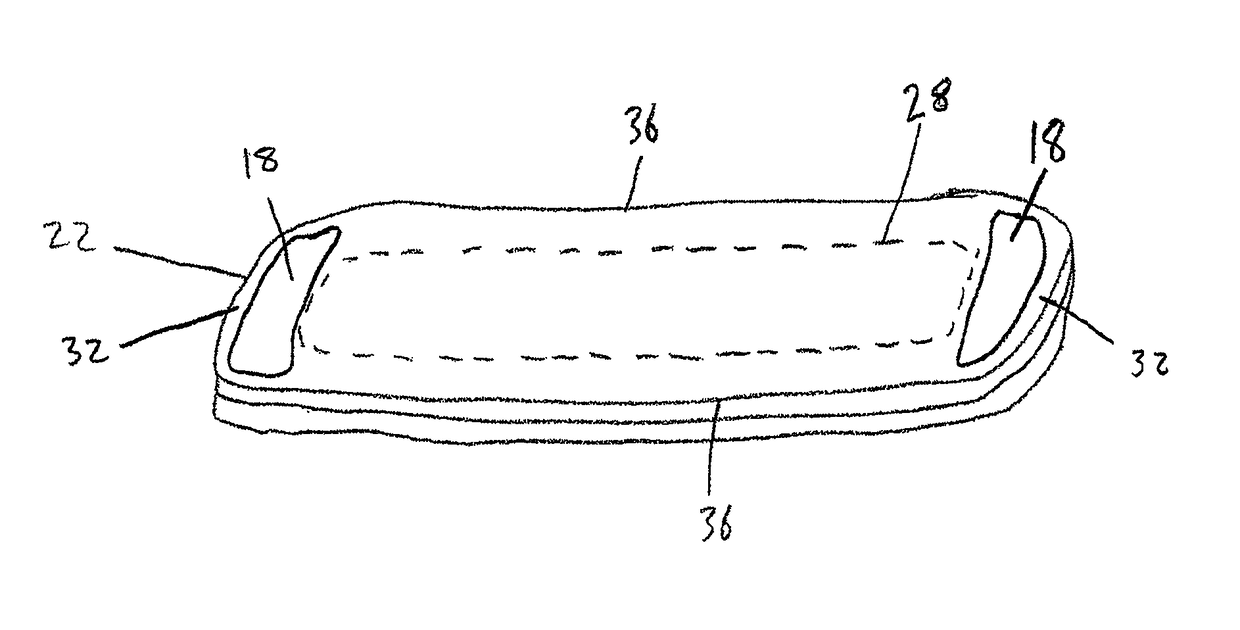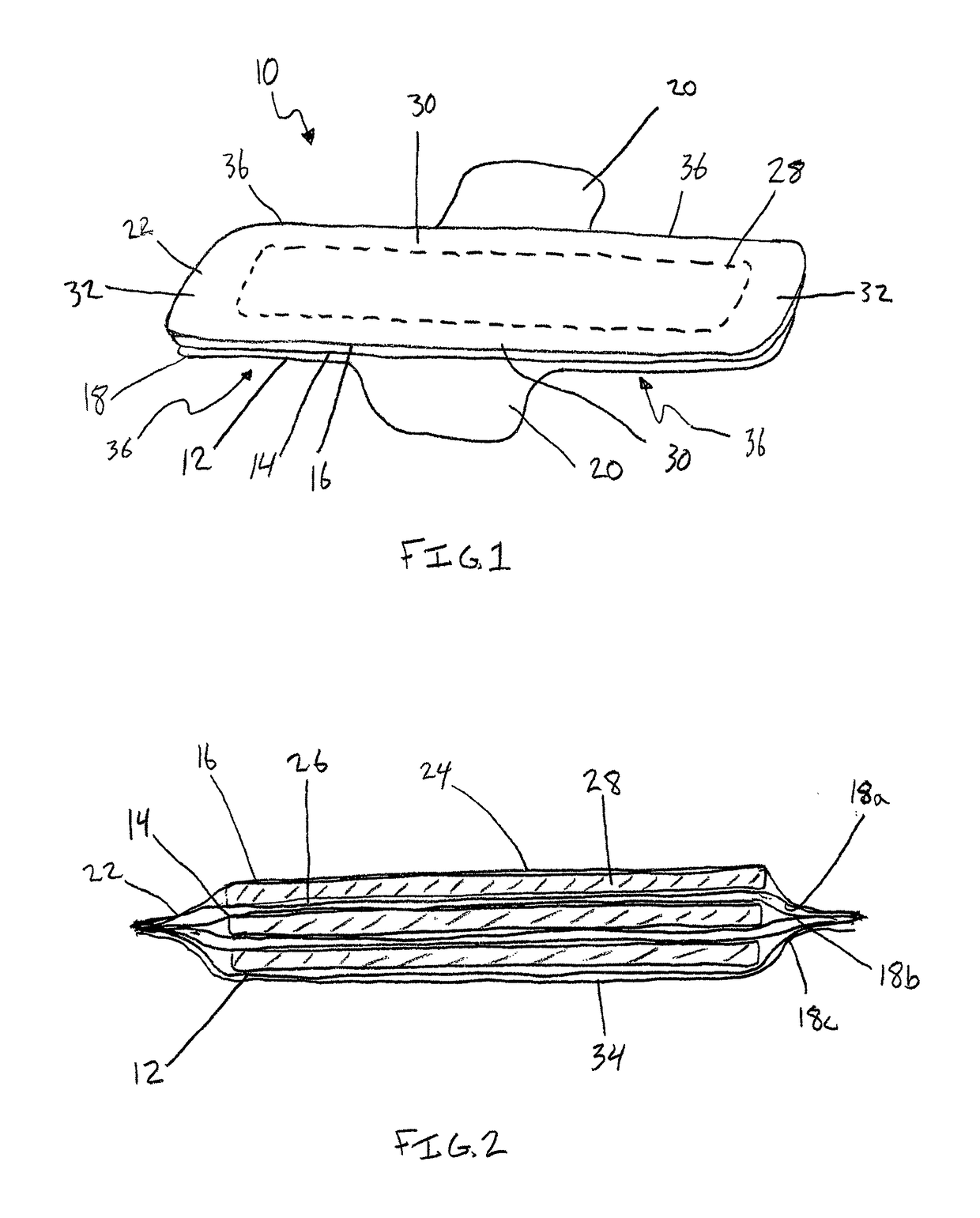Stackable sanitary pads
a technology of absorbent pads and sanitary pads, which is applied in the field of stackable or layered products, can solve the problems of unsecured portions of panty liner layers, discomfort and pain, and the woman is not always at home or otherwise convenient, and achieves the effect of preventing the separation of significant portions of absorbent pads
- Summary
- Abstract
- Description
- Claims
- Application Information
AI Technical Summary
Benefits of technology
Problems solved by technology
Method used
Image
Examples
Embodiment Construction
[0023]At the outset, it is noted that while the following discussion is made with specific reference to sanitary napkins or pads, the present invention can be used with panty liner products, thin incontinence pads, diapers, or any other similar type of absorbent product which is suitable for use herewith. The stackable nature of the product and the unique attachment means are not intended to be limited regarding the specific types of absorbent products discussed hereinbelow.
[0024]The absorbent product 10 of the present invention comprises a plurality of releasably attached absorbent pads 12, 14, 16 which are stacked together. The pads 12, 14, 16 may be attached by any means which provide sufficient attachment strength to maintain product integrity during use. Preferably, the stacked pads 12, 14, 16 are held together in a manner to prevent separation of significant portions of the absorbent pads during use. Thus, an attachment means 18 should be able to continue to hold adjacent pads...
PUM
 Login to View More
Login to View More Abstract
Description
Claims
Application Information
 Login to View More
Login to View More - R&D
- Intellectual Property
- Life Sciences
- Materials
- Tech Scout
- Unparalleled Data Quality
- Higher Quality Content
- 60% Fewer Hallucinations
Browse by: Latest US Patents, China's latest patents, Technical Efficacy Thesaurus, Application Domain, Technology Topic, Popular Technical Reports.
© 2025 PatSnap. All rights reserved.Legal|Privacy policy|Modern Slavery Act Transparency Statement|Sitemap|About US| Contact US: help@patsnap.com



